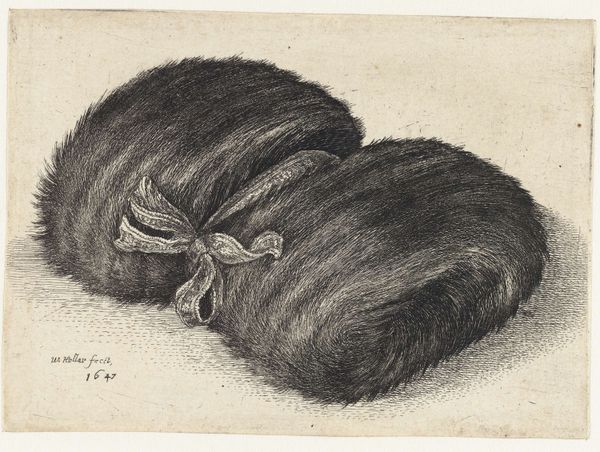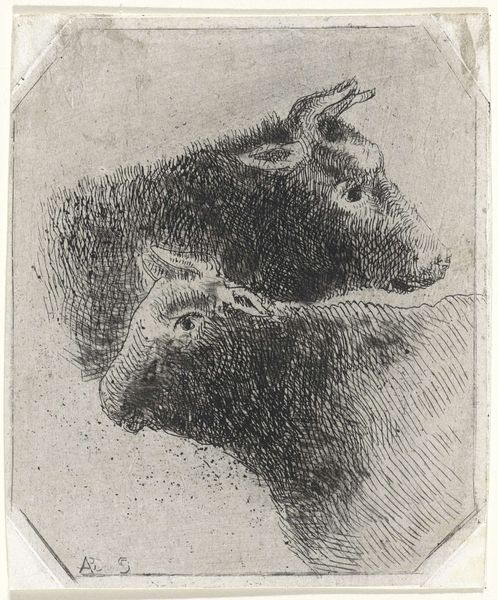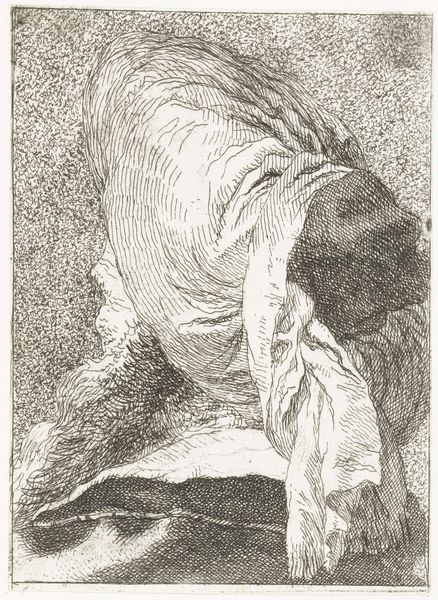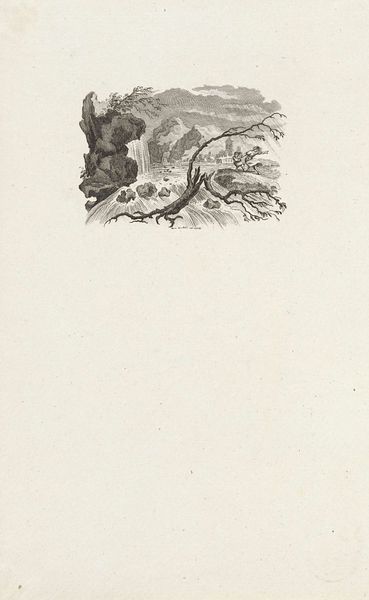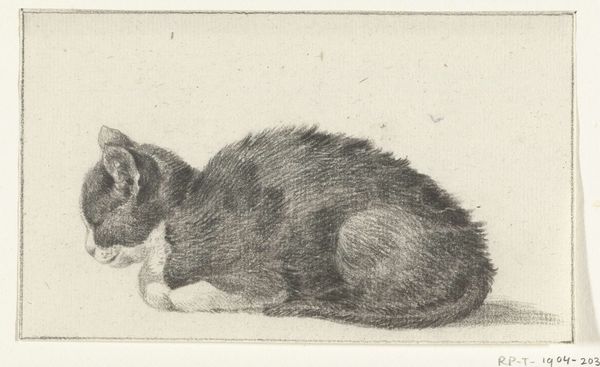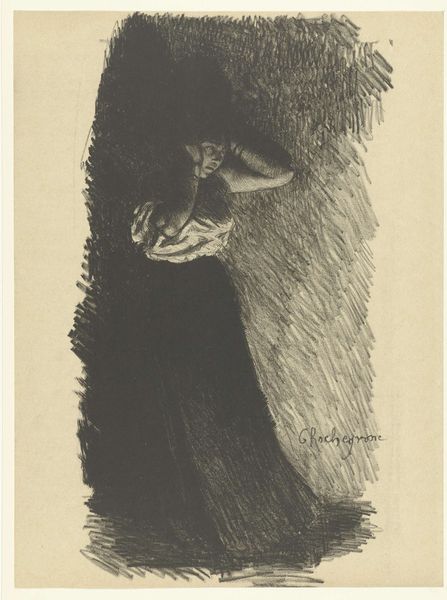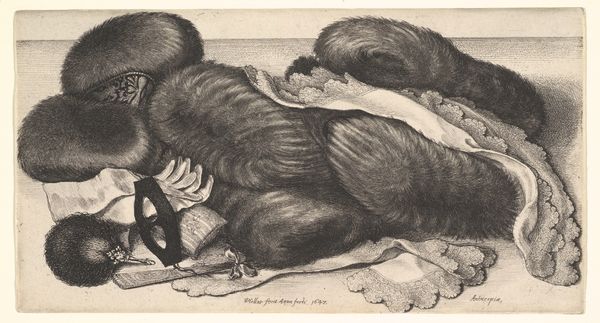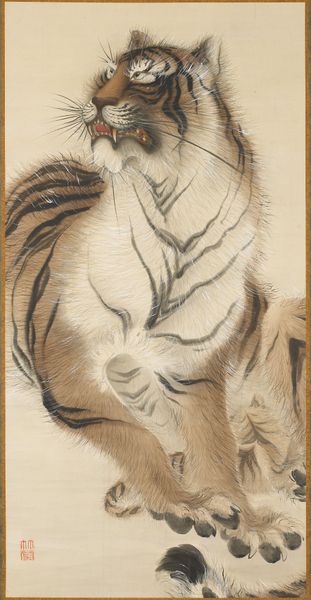
print, engraving
#
baroque
# print
#
old engraving style
#
charcoal drawing
#
pencil drawing
#
line
#
engraving
Dimensions: height 77 mm, width 112 mm
Copyright: Rijks Museum: Open Domain
Curator: Welcome. Here we have an engraving by Wenceslaus Hollar, from 1647. The work, residing here at the Rijksmuseum, is titled "Muff decorated with brocade ribbon." Editor: It’s immediately striking how Hollar has captured the texture. You can almost feel the softness of the fur and the stiffness of that intricately patterned band. There's something very tactile about it. Curator: Absolutely. Hollar was known for his detailed depictions of clothing and textiles, particularly reflecting the trends of the 17th century. Prints like this were disseminated widely and informed style among both the aristocratic and emerging merchant classes. The fur muff itself indicates the sitter's position, given its association with winter and the implication of seasonal incomes afforded to the wealthier. Editor: Considering its date, I am really looking at how meticulously each hair of that fur must have been rendered by hand. What kind of labor would it take to not only source the raw materials to produce such an item in the 17th century, but to also then transform it into a visual representation through etching? There’s a chain of materiality here that’s easy to overlook. Curator: Indeed. These prints also offer a peek into the fashion and social customs of the era. This wasn’t simply about replicating an image; it served as a record of contemporary style. Furthermore, by publishing his prints widely, Hollar tapped into a growing market for fashionable art and helped shape its tastes and aspirations. Editor: Looking closely at the brocade, you get a sense of not just the luxury item that Hollar has captured, but how textiles operated as visual codes, revealing status through the quality of materials, craft and labor used to make them. The social capital invested is staggering! Curator: Indeed. As museum visitors today, it's easy to forget just how powerful images could be in conveying social meaning, and indeed influencing consumption itself. I always see the works in our collection in terms of networks of influence across time. Editor: For me, seeing this engraving as an artifact of material production reframes its visual value. I'll certainly think differently about it when I see someone wearing something similar in the future!
Comments
No comments
Be the first to comment and join the conversation on the ultimate creative platform.



